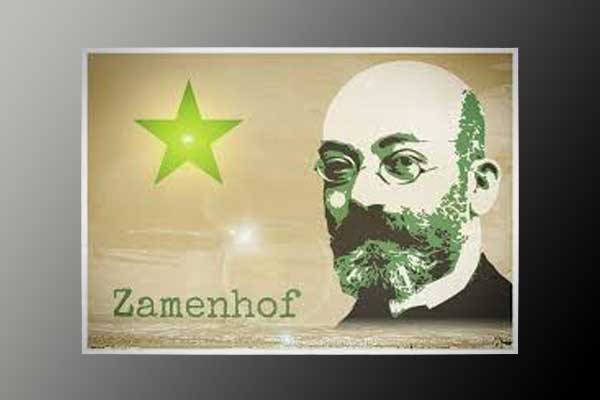December 10, 2019 – Born in the now Polish town of Białystok in 1859, Ludwik Lejzer Zamenhof grew up under the Russian occupation, at a time of violence among the communities in the region: German Protestants, Polish Catholics, Orthodox Russians and Jews. Zamenhof was of Jewish descent and wanted to build a bridge among people “to overcome all divisions” and foster “equality among men and peace”. He decided to do this by developing an international language, Esperanto, literally “one who hopes”.
If the languages we speak necessarily reflect different cultures and a history made by dominators and dominated, Esperanto is a new beginning and the tool that, in the eyes of its inventor, would enable its “speakers” to overcome the innate divisions of natural languages and push time back to a pre-Babel age, when humanity was united and lived in peace.
In 1887 Zamenhof published Unua Libro (“First Book”); this was followed in 1905 by Fundamento de Esperanto, a guide to grammar with exercises and a dictionary. Esperanto is a simplified reduction of a number of mostly European languages: it includes Latin, Italian, French, German, English, Russian and Polish, but also Japanese, Arabic and other languages, and a series of terms invented ex novo.
Structured around 16 basic rules, Esperanto is very easy to learn. It reads phonetically and uses a simple, regular grammar with no exceptions, declensions or conjugations; the nouns end in -o, the adjectives in -a and the adverbs in -e. As English has shown, simplicity is one of the criteria that drive the spread of an idiom.
Esperanto is not the invention of an eccentric idealistic loner: within 18 years from the publication of the first book, 27 newspapers and journals were regularly published in Esperanto and in 1905 Zamenhof organized the first congress, attended by just under 700 people.
If, as US linguist Arika Okrent maintains, the history of artificial languages is a history of failures, then Esperanto cannot be considered a success, since it has been largely overtaken on the international stage by English. But given that at its peak it had two million speakers and today is thought to be spoken, with varying degrees of competence, by 100,000 people, who learned it by hearing it spoken in their childhood (including George Soros who had his father’s memoirs, written in Esperanto, translated into English), it is still the most widespread and longest lasting artificial language.
Today, Esperanto is experiencing a revival through the internet: in the early 2000s, it occurred to Esperantist programmer Chuck Smith that Esperanto could be a bridge in translation performed by specific programs, particularly between languages with a limited supply of superimposable data sets such as Finnish and Turkish. So Smith opened Vikipedio, the Wikipedia Esperanto portal, which currently has around 270,000 pages. Lernu! (“Learn!”) is the core of the Esperanto web, with online courses and an active forum, while the Esperanto course on Duolinguo attracted one million students around the world in 2017.
Text taken from: https://thevision.com/cultura/esperanto-lingua-pace/











